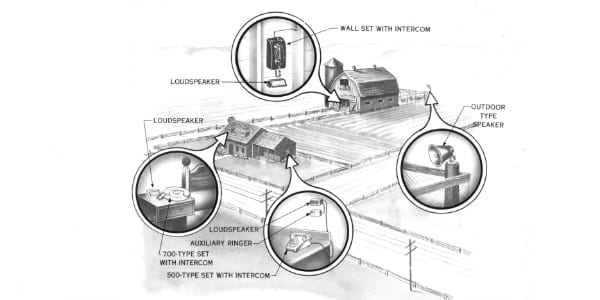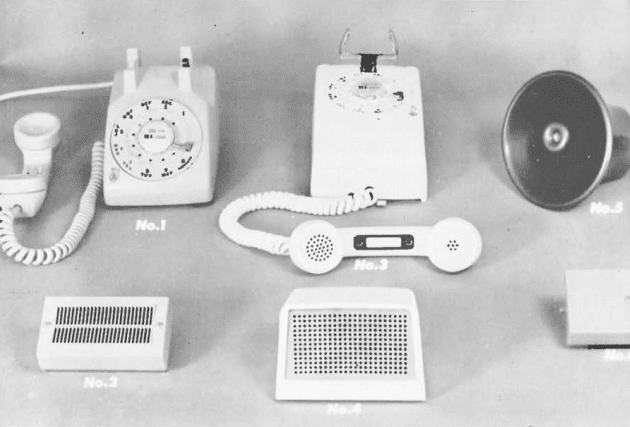Source: The TCI Library
Today, farmers oversee the running of vast farms with the help of technology—web-based platforms for ordering supplies, managing soil quality and crop rotation, and troubleshooting animal care. When they’re out in the field, they also check weather, text their staff and families, and call their financial brokers, all thanks to the mobile phones in their overall pockets.
Imagine running a farm without a mobile phone or computer. Hard to imagine, but of course farmers have managed farms without the Internet of Things since the beginning of time.
Development of the Farm Interphone
By the 1960s, American farms had long had phone lines with a rotary telephone in the farmhouse. Farmers would walk or drive between the fields and their homes, often 20 or more times a day, to make and receive calls, order feed, call the vet, and arrange for the sale of produce. While the telephone saved them multiple trips into town, leaving the fields to take a call still affected how much a farmer could do during the day.
Forward-thinking Bell System engineers to the rescue! Scientists at Bell developed the Bell Farm Interphone, a system of phones and intercoms that allowed farmers to stay out in the field and receive calls.
How Did It Work?
Source: The TCI Library
The main station telephone was located in the farmhouse, and included a master-station loudspeaker-microphone that the farmer’s wife or assistant could use to alert the farmer and have him answer an extension phone.
Extension phones were located in barns or outbuildings, and included a speaker-microphone also, which allowed hands-free answering for the farmer. The system also included a long-range two-way loudspeaker for outdoor use.
Incoming calls could be connected to the field via the loudspeaker, and the field person could respond without having to travel back to the farmhouse.
The farmer could not make a call from the field, or even answer a call—that function still had to be handled at the base station in the farmhouse. But it was a major improvement, one that also saved the farmer’s wife from being interrupted several times a day to go out and find the farmer.
By today’s wireless-technology standards the system is totally obsolete, but consider that this was 20 years before the answering machine and 30 years before the cell phone, so the Farm Interphone was well ahead of its time.
A Voice for the Farm
Below is a 15 minute video outlining the features and benefits of the Bell Farm Interphone. It’s fascinating, both for its explanation of the technology, and for the quaint attitudes and traditional gender roles portrayed. Thankfully, the role of women in agriculture has advance over the decades right along with the technology!
Source: AT&T Archives on YouTube
The benefits to the American farm were clear: A lot of time and effort saved, farm practices streamlined, and the sheer convenience of taking hands-free remote phone calls.
Innovating in the Sixties
Equally interesting is the development of the Farm Interphone. Bell System engineers tested prototypes on more than 100 farms for well over a year, asking farmers and their wives for feedback. They used suggestions to make further improvements before making the system available across the country.
An Information and Description guide and an Installation and Maintenance provide everything technicians and farmers of the day needed to know.
The Bell Farm Interphone is an example of technology developed at the right time to solve a problem, improve business practices and advance society. Let us know in the comments if you have memories of similar systems and applications.


